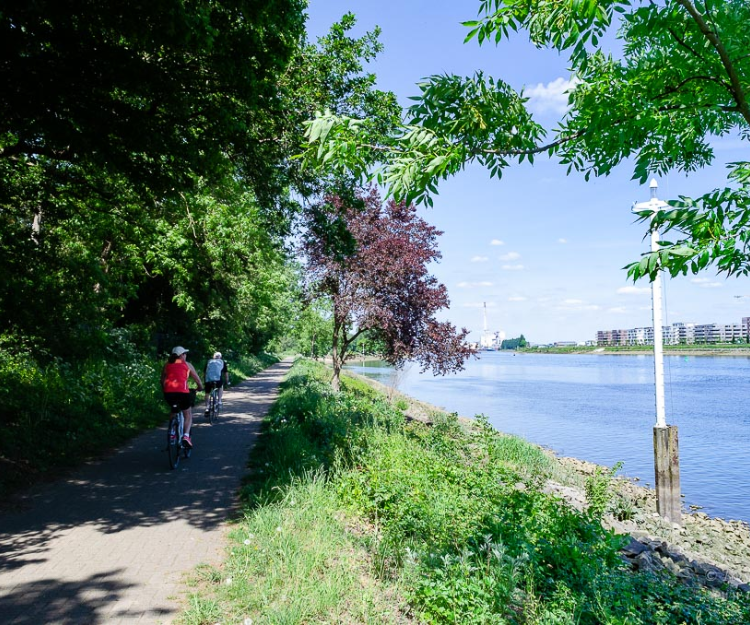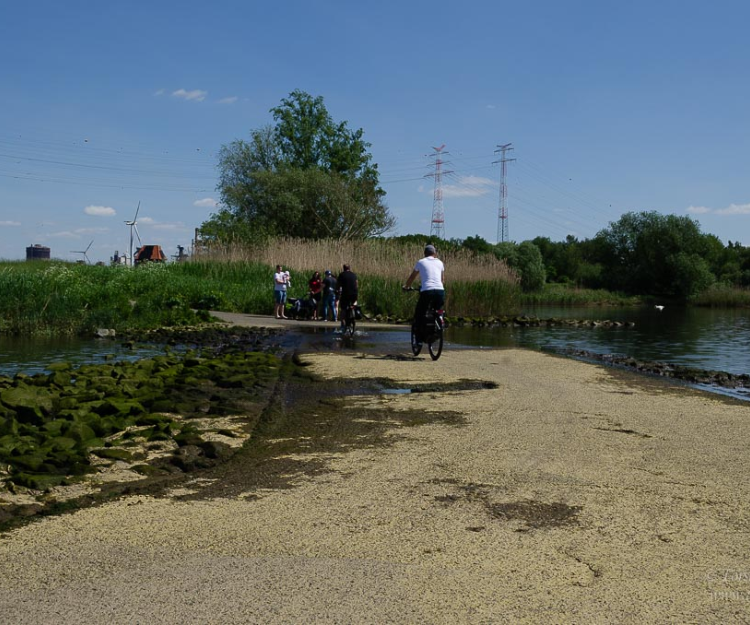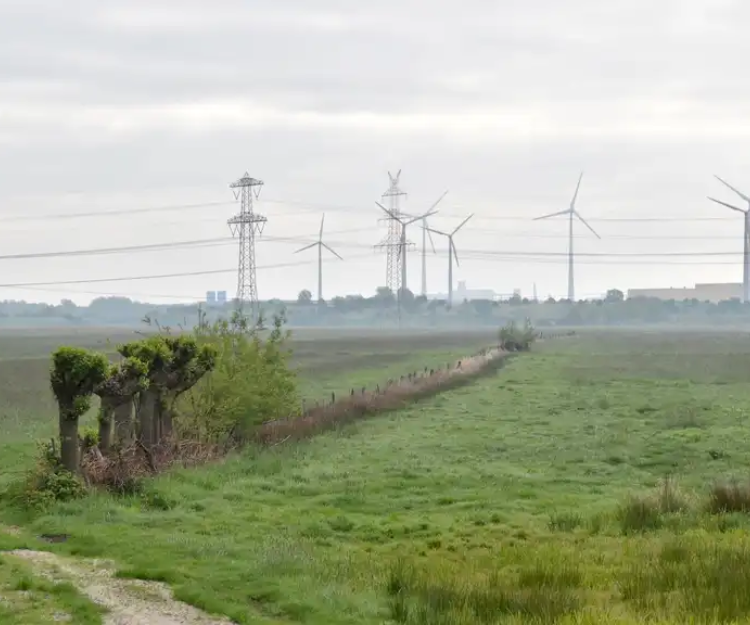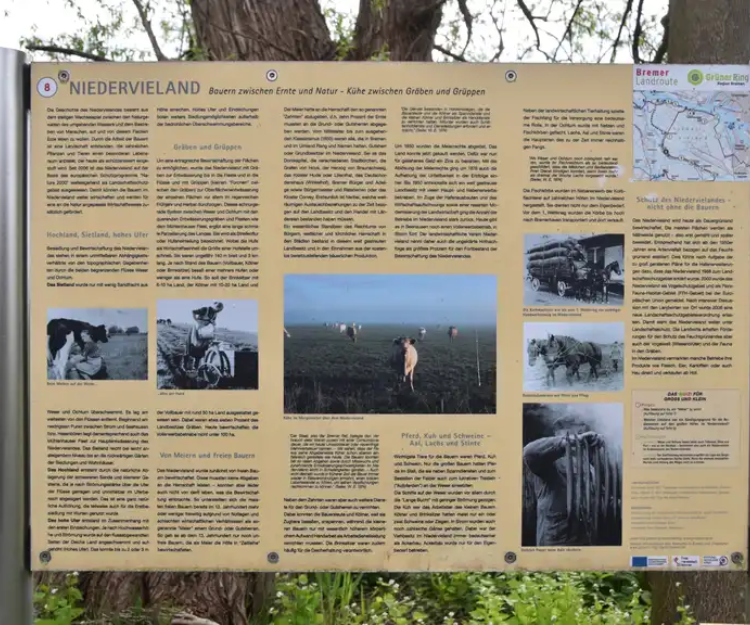
Niedervieland is specifically located in the southern part of Bremen, along the banks of the Weser River. It is a suburban area that is known for its residential neighborhoods and proximity to nature areas such as parks and green spaces. The district is well-connected to the rest of Bremen and has easy access to transportation links.

The district of Niedervieland in Bremen, Germany, has been established for quite some time, likely dating back to the early formation of Bremen as a city-state. Bremen itself has a long history, with its origins tracing back to at least the 9th century. Specific records of when Niedervieland was officially designated as a district within Bremen would depend on local administrative history, but it has been part of the city's landscape for many years.

Niedervieland is not something that was "invented" by a single person. It is a district within the city of Bremen, Germany, which developed organically over time as the city expanded and its population grew. The boundaries and administrative divisions of cities like Bremen are typically determined through historical processes, urban planning, and administrative decisions by local authorities over centuries of development. Therefore, Niedervieland, as part of Bremen, evolved through the natural growth and organization of the city and its surrounding areas.

The name "Niedervieland" in German consists of two parts: "Nieder" and "Vieland."
1. **Nieder**: In German, "Nieder" can mean "lower" or "low." It often refers to lower-lying areas, possibly indicating that Niedervieland is located in a lower or more flat terrain compared to other parts of Bremen.
2. **Vieland**: The second part, "Vieland," could be derived from "Viehland," where "Vieh" means "cattle" or "livestock" in German. This suggests that historically, Niedervieland might have been an area where cattle or livestock were pastured or where agricultural activities related to livestock were prominent.
Combining these elements, "Niedervieland" likely refers to an area that is lower in elevation and possibly associated with agriculture or livestock historically. The name thus reflects the geographical and possibly agricultural characteristics of the district within Bremen.



Niedervieland in Bremen, Germany, can be attractive to hiking lovers for several reasons:
1. **Natural Landscapes**: The district is known for its green spaces, parks, and proximity to the Weser River. This offers hiking enthusiasts opportunities to explore scenic trails along the riverbanks and through parks, enjoying natural landscapes and wildlife.
2. **Trails and Pathways**: There are often well-maintained hiking trails and pathways in and around Niedervieland, catering to different levels of hiking experience. These trails can lead through forests, meadows, and along the river, providing varied terrain and experiences for hikers.
3. **Accessibility**: Despite being part of a city, Niedervieland maintains a balance of urban conveniences and natural surroundings, making it accessible for hiking without needing to travel far from urban areas.
4. **Historical and Cultural Points of Interest**: Hikers can also explore historical landmarks, cultural sites, and charming villages within or near Niedervieland, adding depth to their hiking experience by combining nature with local history.
5. **Community and Safety**: The area typically enjoys a sense of community and safety, making it comfortable for solo hikers or groups to explore trails and enjoy outdoor activities without concerns.
Niedervieland offers a blend of natural beauty, accessible trails, and cultural richness that can appeal to hiking lovers seeking both outdoor adventure and relaxation.




Niedervieland in Bremen, Germany, offers opportunities for hiking throughout the year, each season bringing its own charm and advantages:
1. **Spring**: In spring, Niedervieland bursts with vibrant colors as flowers bloom in parks and along hiking trails. The weather is mild, making it pleasant for longer hikes.
2. **Summer**: Summer in Niedervieland is ideal for hiking due to longer daylight hours and warmer temperatures. Hikers can enjoy shaded trails in parks or along the Weser River, and can even cool off by the water on hot days.
3. **Autumn**: Autumn brings beautiful foliage colors to Niedervieland, creating picturesque landscapes along hiking routes. The weather remains comfortable, and hikers can enjoy the changing scenery as they explore the trails.
4. **Winter**: While winters in Bremen can be chilly, Niedervieland can still be enjoyed for hiking during milder days. The crisp air and quieter trails can provide a serene and peaceful hiking experience, especially in parks and wooded areas.
Throughout the year, Niedervieland maintains its appeal for hiking due to its well-maintained trails, accessibility, and varied landscapes. Whether you prefer the blossoming freshness of spring, the warmth of summer, the colorful foliage of autumn, or the tranquility of winter, Niedervieland offers hiking opportunities suitable for all seasons.